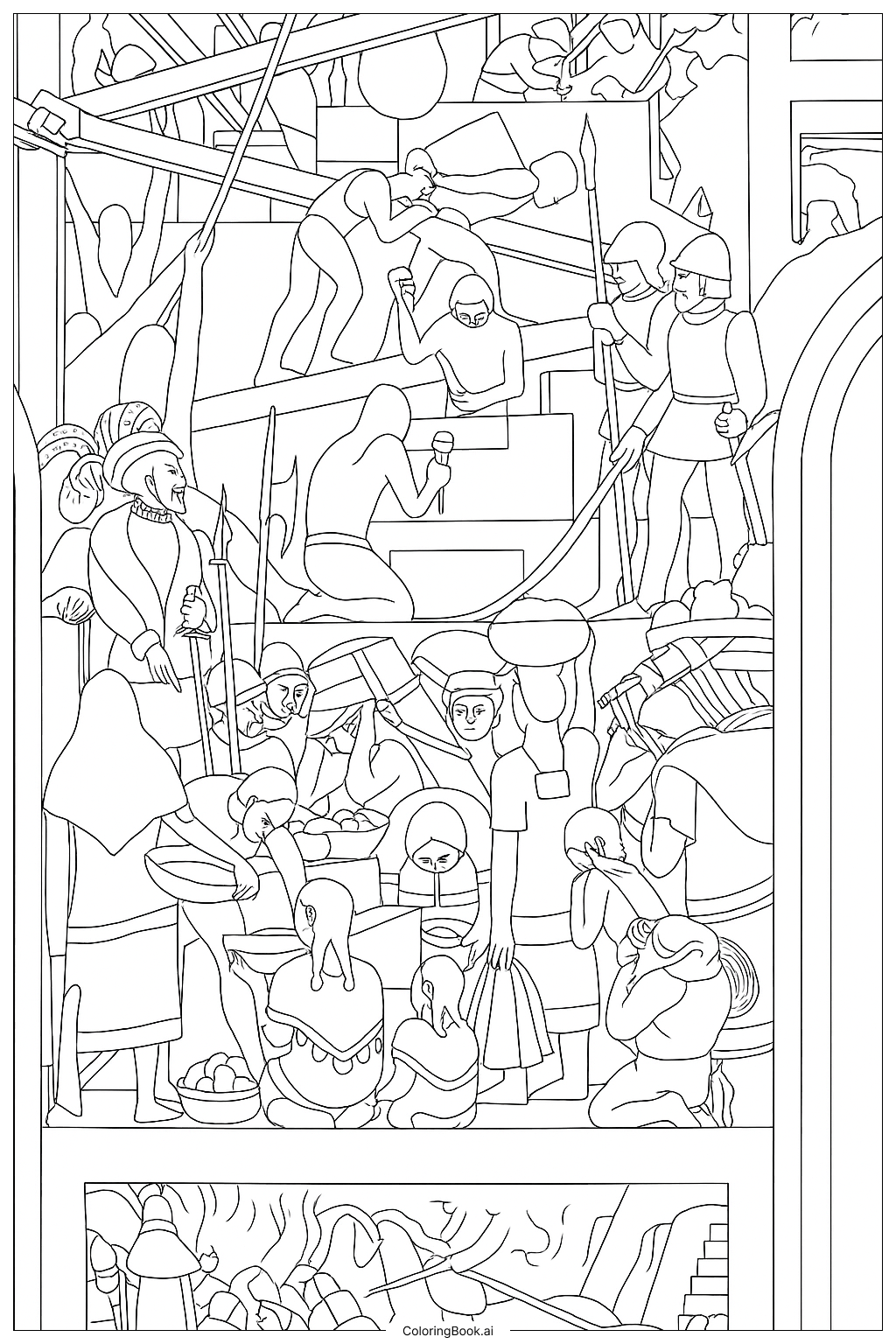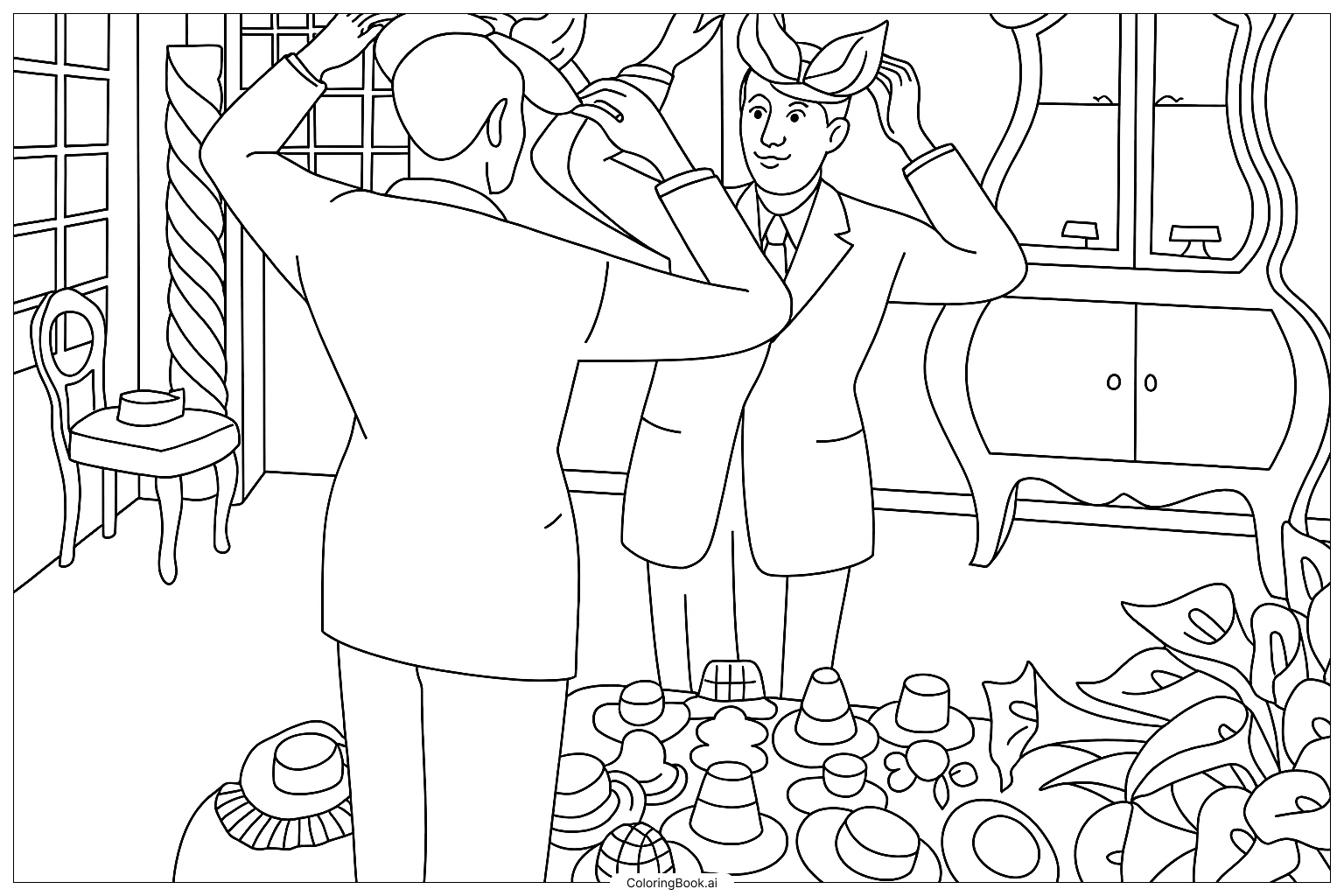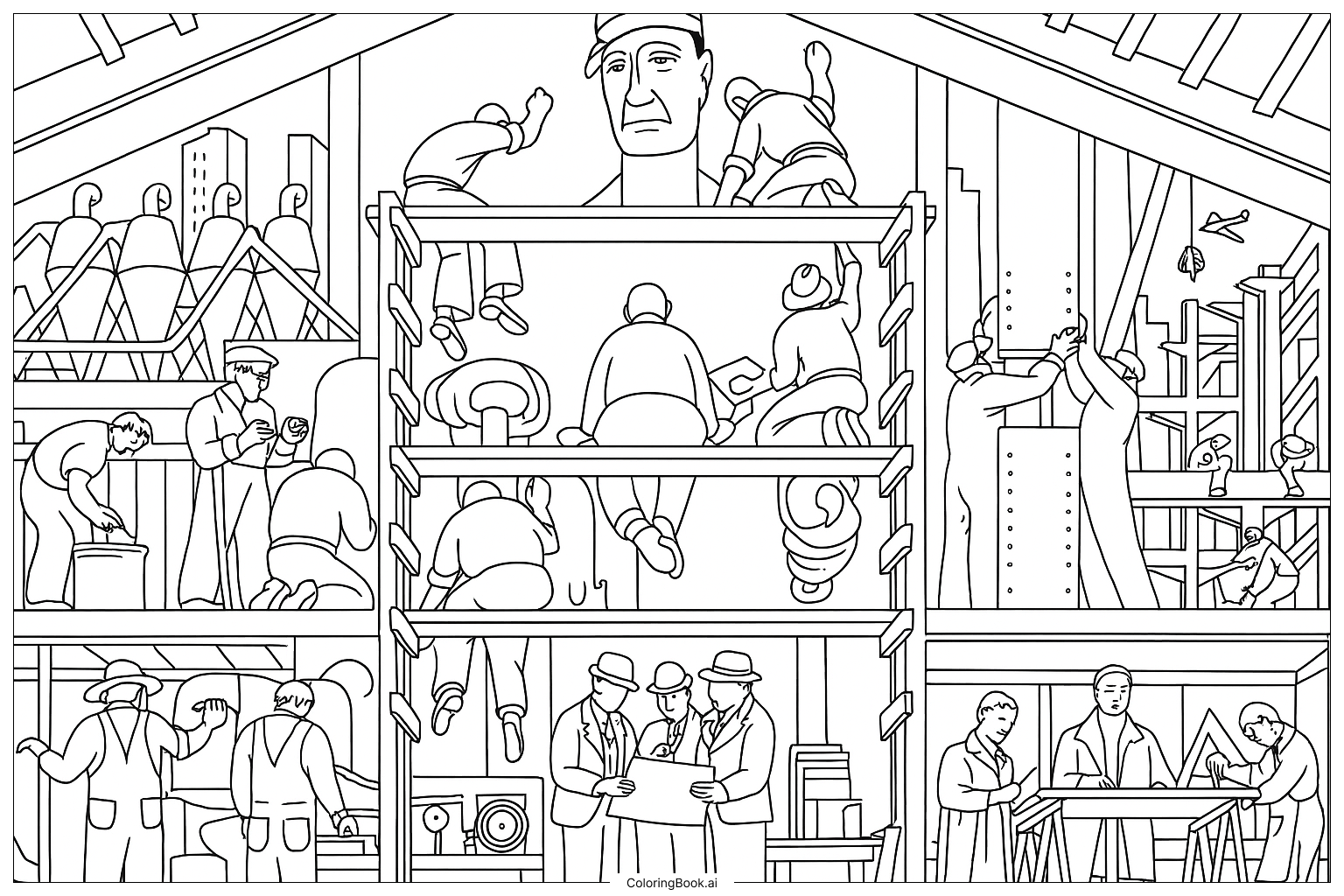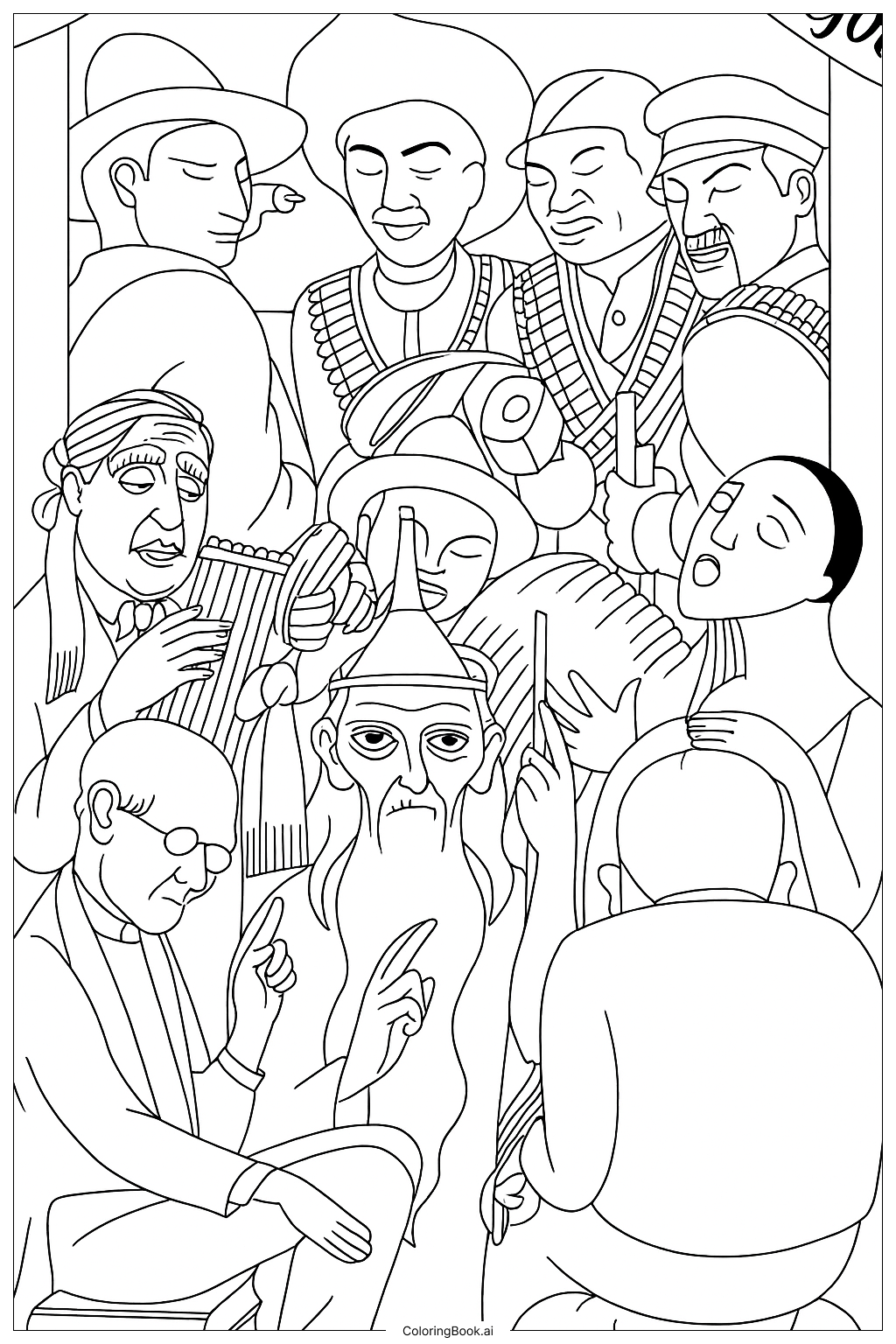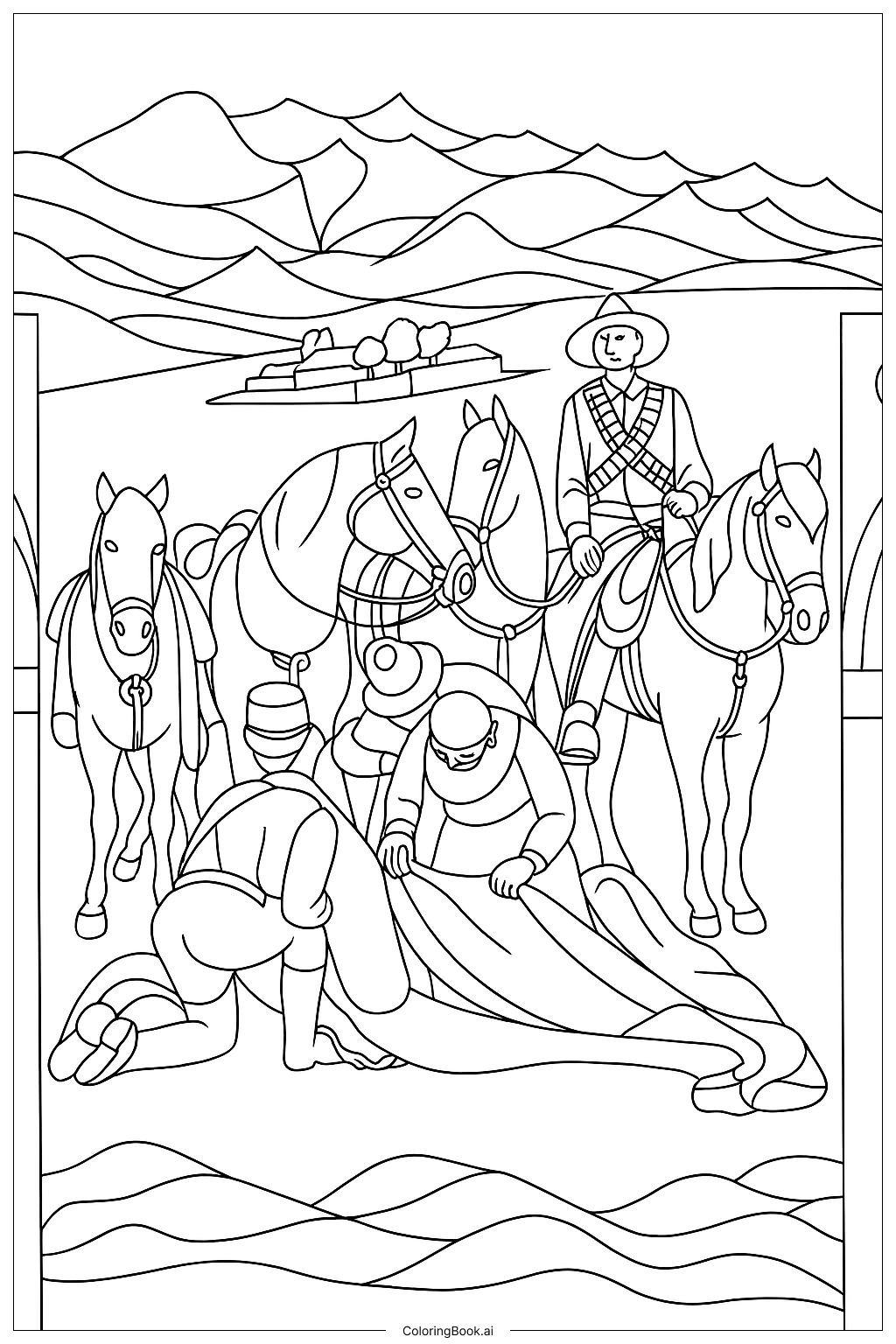Coloring tips: How to color The History Of Cuernavaca And Morelos The Enslavement Of The Indian coloring page well?
Use a variety of warm and earthy colors to bring life to the clothing and background. Shades of brown, red, yellow, and green can represent the clothing of the indigenous people and the natural environment. The soldiers’ uniforms can be colored in metallic shades like silver or gray for their helmets and armor. Use darker colors for shadows under figures and lighter colors on raised areas to create a sense of depth. Pay attention to the different outfits and tools people are holding, using different colors for each to make them stand out. Adding subtle color differences will help separate the figures in the busy scene.
Coloring challenges: Which parts are difficult to color and need attention for The History Of Cuernavaca And Morelos The Enslavement Of The Indian coloring page?
1. The image has many closely packed figures and details, which may make it hard to color without going outside the lines.
2. Some areas have overlapping elements, so careful coloring is needed to keep each part distinct.
3. The variety of clothing and objects require many colors and attention to detail to look realistic.
4. Smaller parts, like faces and hands, need careful coloring to keep the image neat and clear.
5. Balancing bright and muted colors can be tricky to make the whole picture look harmonious without overwhelming the viewer.
Benefits of coloring books: Advantages of drawing The History Of Cuernavaca And Morelos The Enslavement Of The Indian coloring page
Coloring this image helps children learn about history and culture while practicing their fine motor skills. It encourages attention to detail and careful work because of the many small parts. Using different colors to show different people and objects can boost creativity and color recognition. It also promotes patience and focus by requiring careful coloring inside the lines. Overall, this picture supports both artistic skills and historical awareness.
